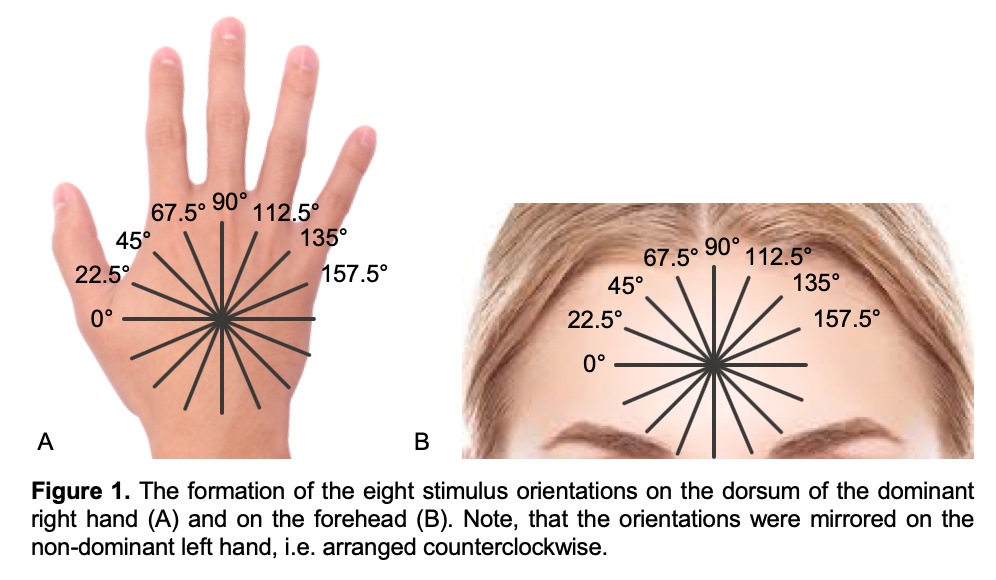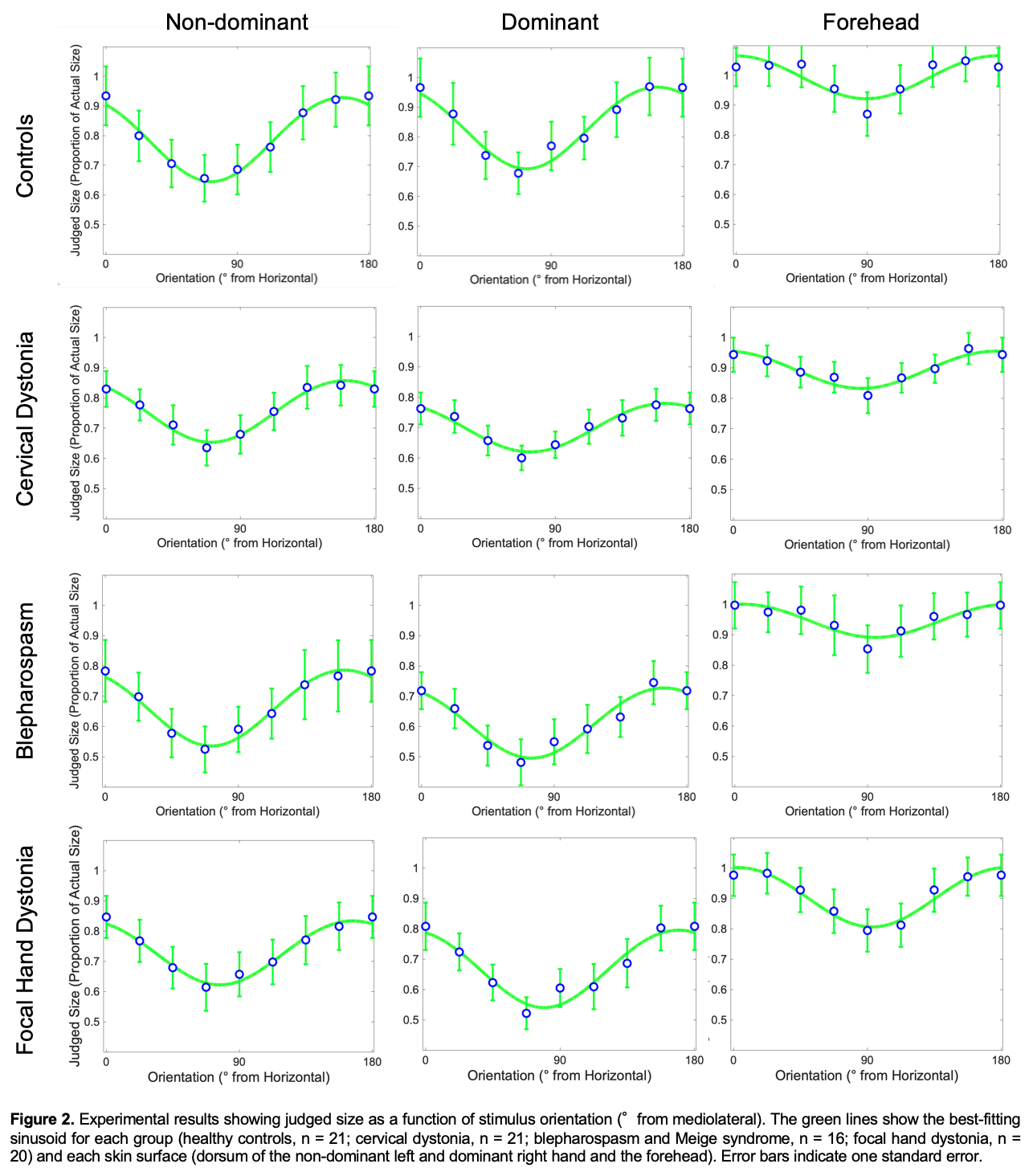Category: Dystonia: Pathophysiology, Imaging
Objective: To assess the organization of tactile space in patients with focal dystonia.
Background: Changes in cortical sensorimotor organization have been previously demonstrated in isolated focal dystonia (1,2). However, the specificity and significance of these findings remains unclear. We here sought to explore differences in tactile space organization across patients of different dystonic groups. We employed an established behavioral paradigm of tactile distance perception, which relies on the structural organization of somatosensory receptive fields (3).
Method: 57 patients with isolated focal dystonia (cervical dystonia, n=21; blepharospasm and Meige syndrome, n=16; focal hand dystonia of the right hand (FHD), n=20) and 21 age-matched healthy controls participated. Perception of tactile distances was investigated on the back of both hands and on the forehead. Four stimuli consisting of pairs of wooden posts separated 25, 30, 35 and 40mm were applied in 8 different orientations in intervals of 22.5° according to (3) [fig. 1]. In each of the 160 trials per test area, participants estimated the perceived distance between the two wooden posts in centimeters.
Results: Experimental data was modeled by calculating the best-fitting sinusoid for each participant (3). The amplitude of the sinusoids, i.e. the magnitude of difference between perceived distances across orientations, did not differ between groups on each skin surface (ANOVA, non-dom.: F(3,74)=0.61, p=0.611, dom.: F(3,74)=1.503, p=0.221, forehead: F(3,74)=0.795, p=0.501). The axis of maximum stretch, i.e. the orientation at which tactile distances are perceived as largest, showed no differences between groups, neither for the non-dominant (Watson-Williams-test, F(3,74)=0.49, p=0.693) or the dominant hand (F(3,74)=1.14, p=0.34), nor for the forehead (F(3,74)=0.77, p=0.513). The offset of the sinusoid, i.e. the global size estimation of tactile distances, revealed no differences between groups (ANOVA, non-dom.: F(3,74)=0.591, p=0.623, dom.: F(3,74)=1.794, p=0.156, forehead: F(3,74)=0.602, p=0.616) [fig. 2].
Conclusion: Tactile distance perception is intact in patients with isolated focal dystonia both in affected and unaffected body parts. These results question the role of abnormal somatosensory organization as an overarching pathophysiological feature of isolated focal dystonia.
References: 1. Blake DT, Byl NN, Cheung S, Bedenbaugh P, Nagarajan S, Lamb M, et al. Sensory representation abnormalities that parallel focal hand dystonia in a primate model. Somatosens Mot Res. 2002;19(4):347–57. 2. Bara-Jimenez W, Catalan MJ, Hallett M, Gerloff C. Abnormal somatosensory homunculus in dystonia of the hand. Ann Neurol. 1998 Nov;44(5):828–31. 3. Fiori F, Longo MR. Tactile distance illusions reflect a coherent stretch of tactile space. Proc Natl Acad Sci USA. 2018 06;115(6):1238–43.
To cite this abstract in AMA style:
T. Mainka, E. Azanon Gracia, K. Zeuner, A. Knutzen, T. Bäumer, J. Neumann, A. Kühn, M. Longo, C. Ganos. Intact organization of tactile space in isolated focal dystonia [abstract]. Mov Disord. 2020; 35 (suppl 1). https://www.mdsabstracts.org/abstract/intact-organization-of-tactile-space-in-isolated-focal-dystonia/. Accessed December 24, 2025.« Back to MDS Virtual Congress 2020
MDS Abstracts - https://www.mdsabstracts.org/abstract/intact-organization-of-tactile-space-in-isolated-focal-dystonia/


